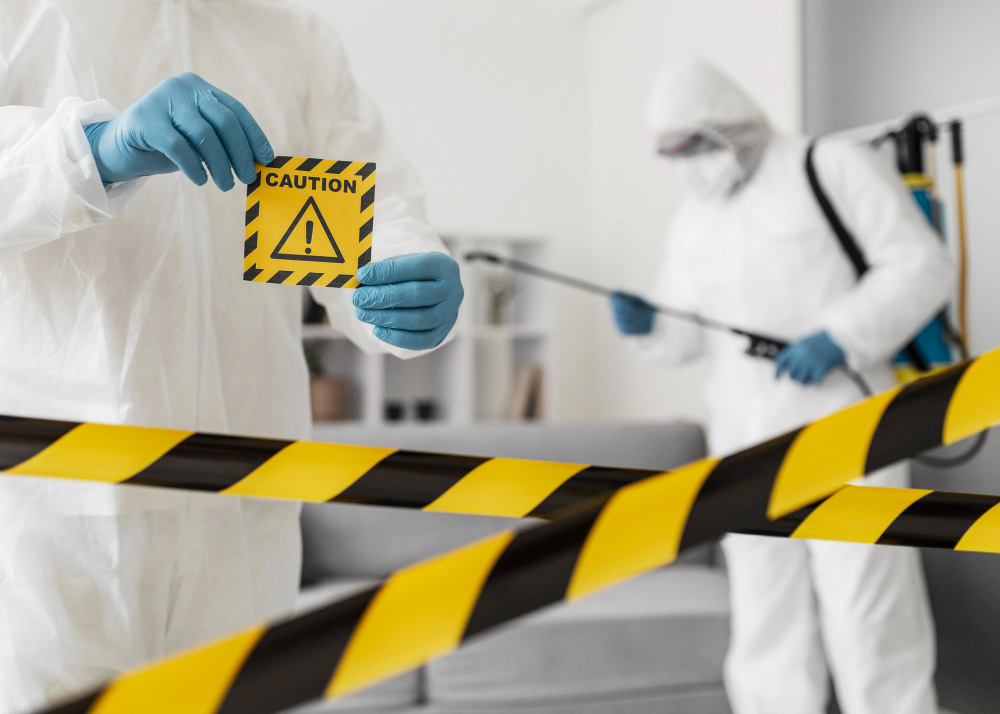Biohazard cleanup is often associated with crime scenes, but its significance extends far beyond that. It’s a crucial service that ensures the safety and health of individuals and the environment. In this comprehensive guide, we’ll explore the multifaceted world of biohazard cleanup, shedding light on its broader applications and importance.
Biohazard Cleanup: Not Just for Crime Scenes
When we hear the term “biohazard cleanup,” our minds often jump to crime scenes. While it’s true that this service is essential in such scenarios, it’s also vital in various other situations. From industrial accidents to natural disasters, biohazard cleanup plays a pivotal role in restoring safety and normalcy.
Understanding Biohazards
What Constitutes a Biohazard?
Biohazards refer to biological substances that pose a threat to the health of living organisms. This can include bacteria, viruses, and other microorganisms that can cause diseases.
Types of Biohazards
- Bloodborne Pathogens: These are microorganisms present in human blood that can lead to diseases.
- Animal Waste: Droppings or body fluids from animals can be hazardous.
- Human Body Fluids: This includes blood, mucus, and other fluids that can be infectious.
The Importance of Professional Cleanup
Safety First
Professional biohazard cleanup ensures that all harmful substances are removed effectively, reducing the risk of exposure and potential health issues.
Expertise and Equipment
Professionals in the field have the necessary training and equipment to handle biohazards safely and efficiently.
Applications Beyond Crime Scenes
Industrial Accidents
Chemical spills and other industrial accidents can result in biohazards that need immediate attention.
Natural Disasters
After events like floods or hurricanes, biohazard cleanup is essential to prevent the spread of diseases.
Home and Property
Mold, sewage backups, and even pest infestations can necessitate biohazard cleanup.
The Process of Biohazard Cleanup
Assessment
Before starting the cleanup, professionals assess the situation to determine the extent of contamination.
Cleanup and Disposal
Using specialized equipment, the team will clean up and dispose of all biohazardous materials.
Sanitization
After cleanup, the area is sanitized to ensure no harmful microorganisms remain.
Conclusion
Biohazard cleanup, while often associated with crime scenes, is a vital service in various scenarios. Its primary goal is to ensure the health and safety of individuals and the environment. By understanding its broader applications and significance, we can appreciate the professionals who work tirelessly in this field and the importance of their services.
FAQs
What is the primary purpose of biohazard cleanup?
The main goal is to safely remove biohazardous materials, ensuring the health and safety of individuals and the environment.
Is biohazard cleanup only for crime scenes?
No, it’s essential for various scenarios, including industrial accidents, natural disasters, and even home-related issues.
How do professionals ensure safety during the cleanup?
They use specialized equipment and follow strict protocols to minimize exposure and risks.
Are all biohazards visible to the naked eye?
No, many biohazards, like bacteria and viruses, are microscopic and can’t be seen without specialized equipment.
Why can’t regular cleaning methods be used for biohazards?
Regular cleaning methods might not effectively remove all biohazardous materials, leaving behind potential risks.
What should one do upon discovering a potential biohazard?
It’s crucial to avoid contact and immediately call professionals to handle the situation.





